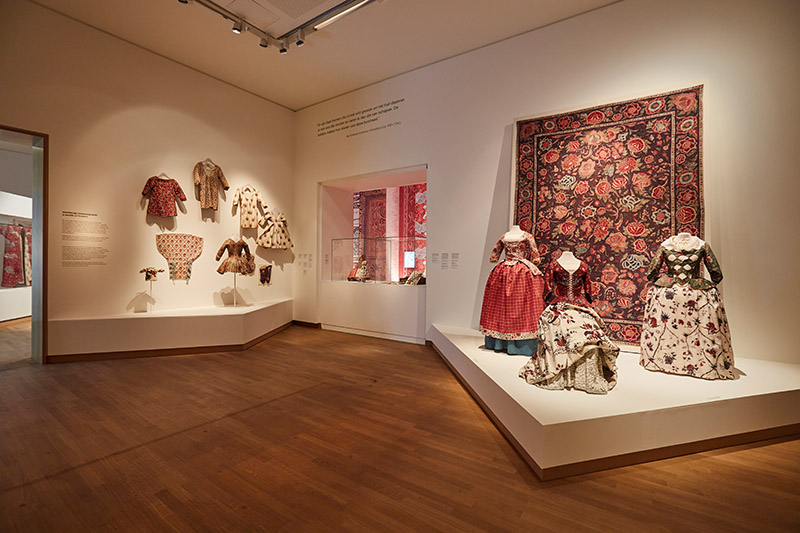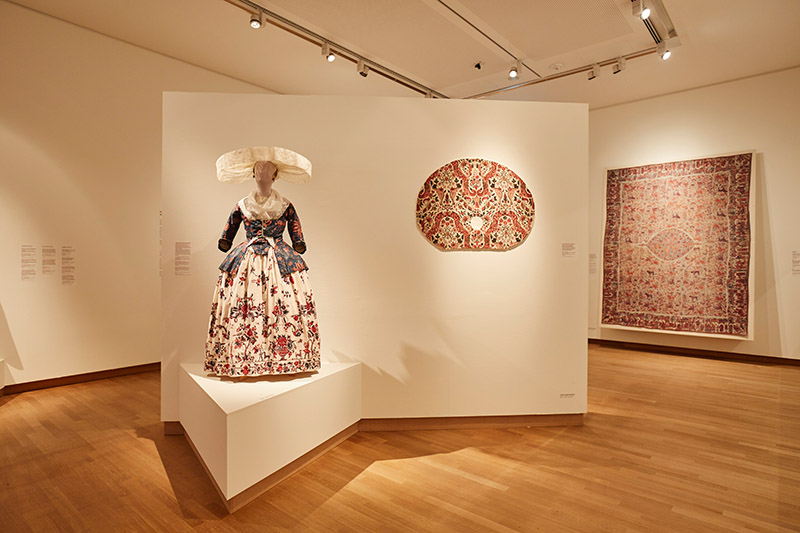
11 March until 10 September: chintz, cotton in bloom
From 11 March until 10 September 2017 the Museum of Friesland in Leeuwarden presents a major exhibition of its extensive and well-preserved collection of chintz, the shiny, floral, hand-painted cotton from India that conquered 16th-century Europe. The beautiful patterns feel familiar while at the same time convey a special story. Objects displayed range from skirts, jackets, sun hats and regional clothing to wall hangings and blankets. The exhibition Chintz, cotton in bloom takes the visitor on a journey from India to Hindeloopen, Indonesia and Japan.
Chintz, cotton in bloom shows the wide variety of colourful floral patterns on skirts and jackets, as well as huge wapenpalempores (bedspreads larger than 3.5 x 2.5 metres with a coat of arms). The regional clothing demonstrates how the chintz was cherished and preserved. The visitor discovers the special techniques of this craft and how chintz played an important role in the world in the 17th century. In addition, the exhibition shows that chintz still inspires new initiatives in the field of handicrafts. Together with the Textiel Factorij, the Museum of Friesland presents contemporary works by Dutch artists and designers made with Indian craftsmen.
exotic, yet typically frisian
From 1602, sailors in the employ of the VOC exchanged the beautiful cotton fabrics they procured in India for spices in Indonesia. Chintz was the VOC’s ‘gold’. The painted floral decorations soon became very popular back home and two centuries later were part of regional costumes in the Netherlands. Women’s clothing in the Frisian town of Hindeloopen is the most striking example
attention to craftsmanship
Chintz is traditional, labour-intensive handiwork. The cotton is hand painted with natural dyes and the designs are very detailed. The creative process is fascinating, complex and time consuming. Textile designer Renuka Reddy from Bangalore conducted a series of tests that show the different production stages.
highlights
The Museum of Friesland has an extensive collection of well-preserved chintz. One of the highlights is an 18th-century kimono. Because the Netherlands was the only Western country that was allowed to trade with Japan at that time, the ‘Japanese dress’ became fashionable. The popularity of chintz also grew during this period. This was how a Japanese kimono that was decorated in India with Japanese pine trees in chintz style was then worn in the Netherlands. The kimono was painted 300 years ago, but still looks brand new. Like no other object in the collection it demonstrates how different cultures come together in a seemingly simple cotton garment. Another masterpiece is a 17th-century tapestry, the oldest chintz object in the Netherlands, decorated with lions, mythical birds and a border with amorous scenes.
chintz now
In collaboration with the Textiel Factorij, the Museum of Friesland shows how chintz is still a source of inspiration. The Textiel Factorij’s project brings Dutch artists and designers together with Indian craftsmen. Some of these artists present the results of this cooperation in this exhibition, Chintz, cotton in bloom.
Fries Museum
Wilhelminaplein 92
8911 BS Leeuwarden
T: 058 255 55 00



